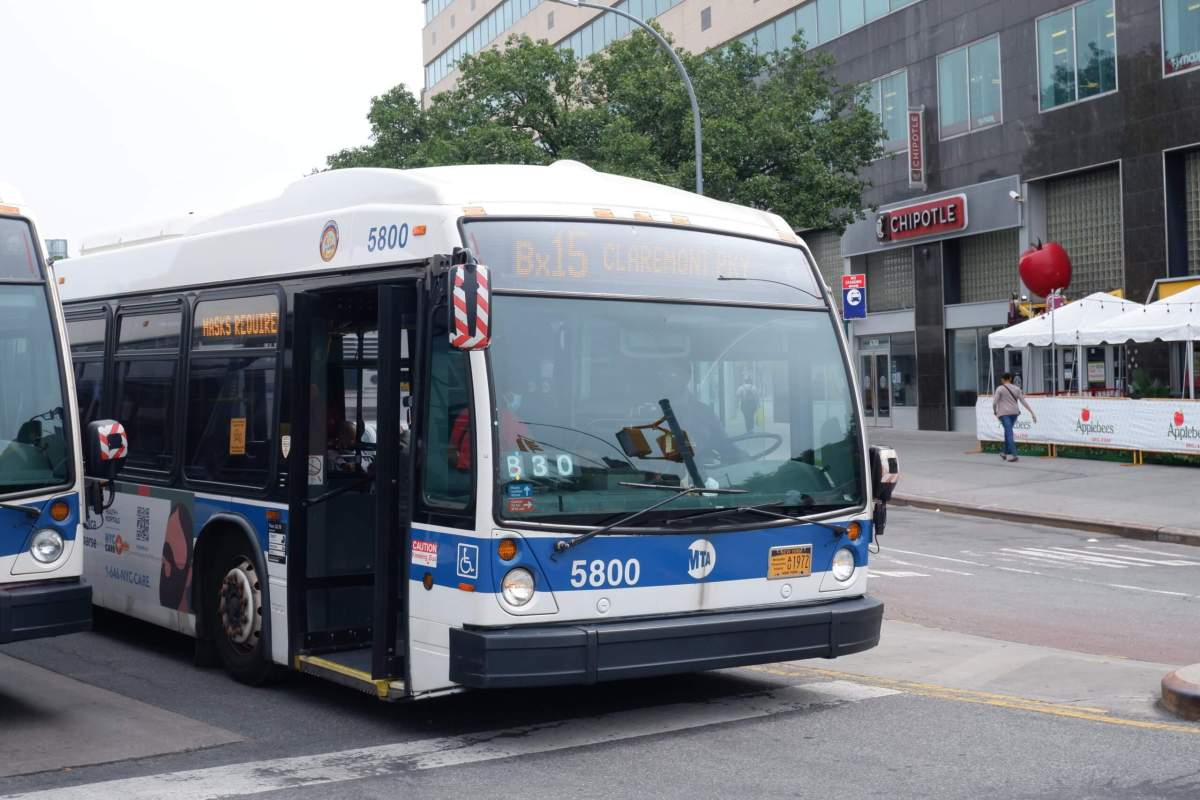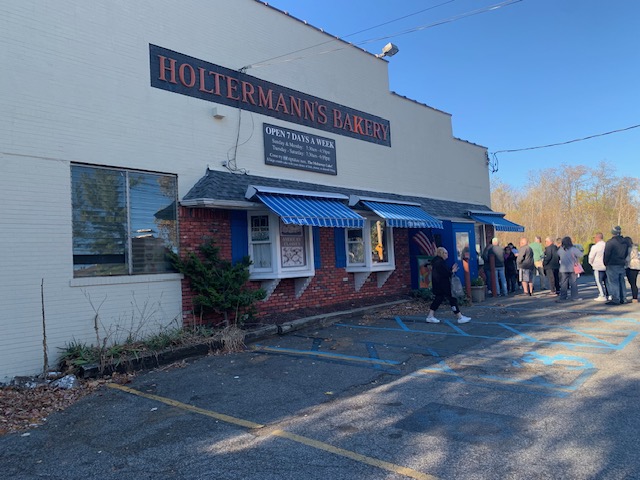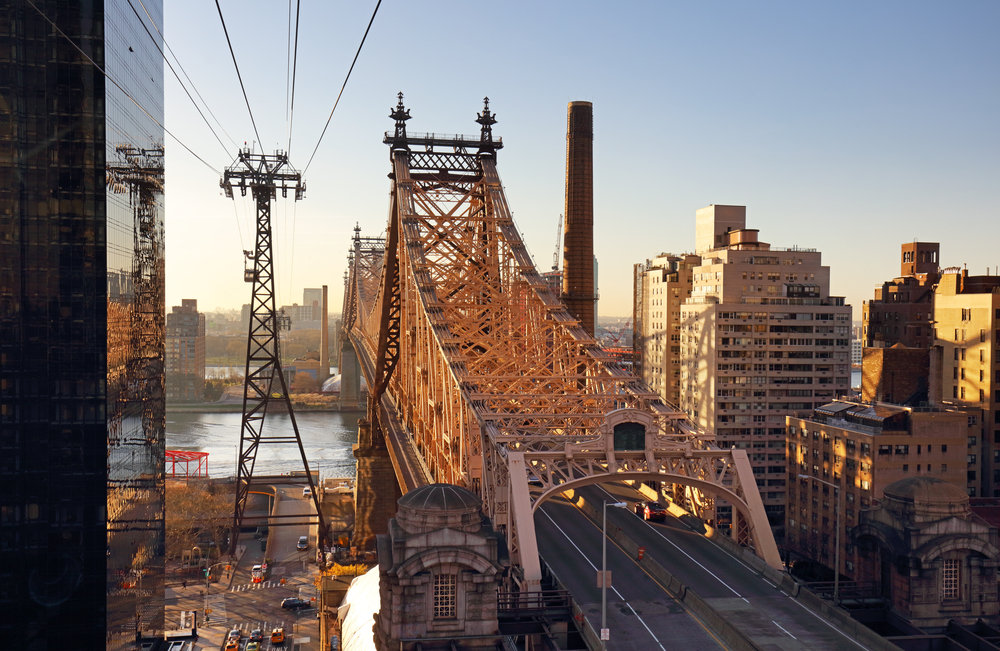The MTA will pilot free bus service on five lines throughout the city as part of the budget deal reached by Governor Kathy Hochul and leaders of the State Legislature on Thursday.
The pilot program will last for two years, the governor said, and will include one line in each borough — down from the two-per-borough sought by the State Legislature. The lucky lines will be chosen and implemented by the MTA, though the timeline for that remains unknown.
“I’m also pleased to announce, as we encourage more people to take buses, take public transportation, that we’re launching a two-year pilot program in New York City to offer free bus service on five different lines, one in each of the boroughs,” Hochul said Thursday evening as she announced the “conceptual” budget agreement. “And the MTA will decide what the lucky areas are.”
The move comes as a major win for progressive pols and advocates, who had been advocating free bus service as part of a legislative package to “fix” the MTA. The coalition, supported by the influential transit workers union, also secured investments in increased subway service and a reduction in this year’s planned fare hike, from 5.5% to 4%.
“The MTA, like schools and libraries, is a public good,” said Assemblymember Zohran Mamdani, a Queens Democrat and the primary sponsor of the Fix the MTA package. “As we continue to fight to fully fund all public goods, I’m excited that the vision of free buses from our ‘Fix the MTA’ package has been included in this year’s budget.”
The State Legislature had sought two free lines per borough, one serving a low-income community and the other a commercial corridor. With only one route per borough in the budget agreement, it remains to be seen how the MTA selects the pilot routes.
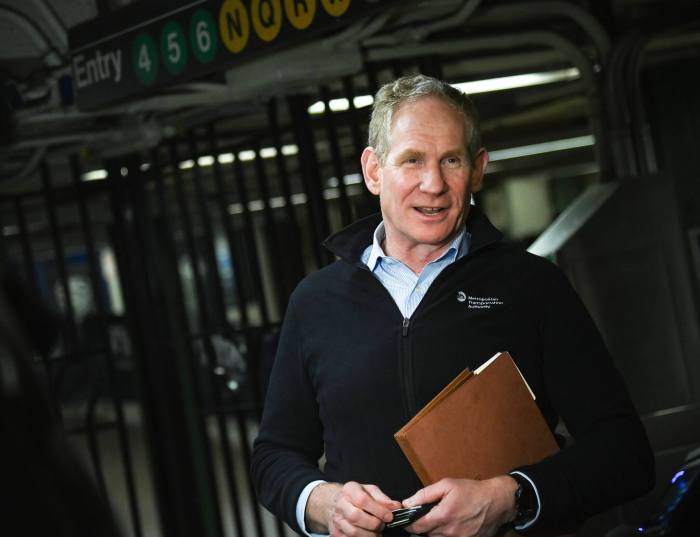
MTA Chair and CEO Janno Lieber, who applauded the budget agreement, said Friday that the authority will choose routes in such a way to prevent the “experiment” from becoming an “accelerant” of fare evasion. He made sure to note that while five routes will be free, the remaining 321 routes will still require a fare.
“We’re gonna select them in a way to make sure we can identify the impacts of ridership and so on, and not have it be an accelerant of fare evasion. We are dealing with a very serious fare evasion problem on buses. People got used to riding for free during COVID,” said Lieber. “We don’t want it to give people the impression that every bus in New York is free.”
Lieber also said that the MTA will make its selections with an eye toward collecting data on the impact. The routes where the “ridership and operational impacts” can best be measured are those that don’t overlap with other lines, the chair noted.
Fare-free bus service is gaining steam across the country. Washington DC is set to make all of its local buses free starting in July, while fare collection was suspended on several Boston bus routes last year and will continue at least through 2024. Kansas City has had free buses and streetcars since 2019.
In New York, bus riders tend to have lower incomes and are more likely to be people of color than subway riders and drivers, yet they rely on the slowest buses in the nation.
Hochul says that the plan will rescue the MTA from the dreaded “fiscal cliff,” which would lead the agency to an untenable $3 billion deficit by 2026 if left unaddressed. While the MTA this month celebrated a milestone of 4 million subway passengers in one day, transit ridership remains well below pre-pandemic levels as working from home becomes normalized, portending a significant hit on MTA finances and requiring new ideas for transit funding.
The plan will generate $1.1 billion in new revenue for the MTA through an increase in the payroll mobility tax on large New York City businesses from 0.34% to 0.6%. The governor had sought to increase the tax by a smaller margin but apply it to suburbs served by the MTA as well, but faced considerable backlash from suburban lawmakers who argued only the city should have to contribute, despite also benefitting from MTA service and capital investment.
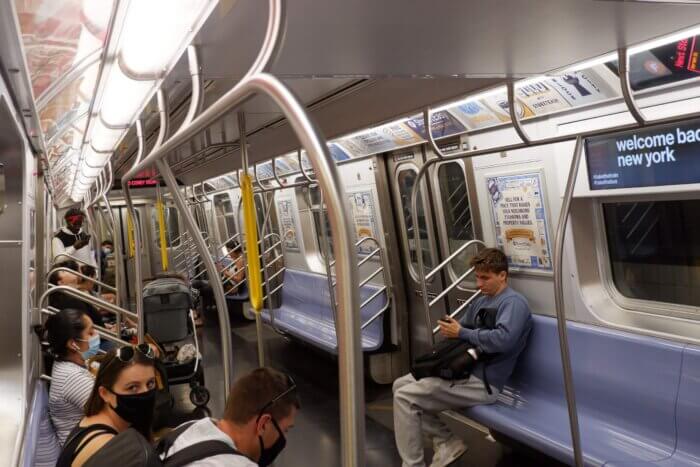
The city will also be required to contribute another $165 million annually to the MTA for paratransit service, less than the $500 million sought by the governor, but more than the zero that Mayor Eric Adams wanted to contribute, citing the city’s own fiscal headwinds and the fact no other municipality was asked to contribute. The state will contribute $300 million this year to subsidize MTA operations and will contribute some revenue from future downstate casinos to the transit authority.
Overall, the plan keeps the MTA on a solid financial footing for the next four years, Lieber argued, preventing larger fare hikes, service cuts, or layoffs.
“I’m just thrilled that we filled the whole MTA deficit. No danger of a massive fare increase or a massive reduction in service,” Lieber said. “That’s what I was worried about, and [Hochul] got that done.”
Key details of the budget agreement remain murky, though, as the official budget bills have still not been filed. The lower fare hike, funded with $65 million in the budget, means riders will not be paying more than $2.86 for a subway or bus ride this year, but the final hike — which will also go into effect on the Long Island Rail Road and Metro-North — will be determined sometime this summer by an internal MTA working group and approved by the MTA Board.
The cost of the free bus pilot hasn’t been clarified. In February, the city’s Independent Budget Office estimated that it would cost $652 million per year to make buses fare-free for all riders. Fare-free buses would cost $40 million per year for seniors and people with disabilities only, and $28-83 million for low-income riders depending on how many people sign up for benefits.
It’s also unclear just how much service will be expanded on the subway, though Lieber noted it will likely encompass an increase in frequency. Advocates remain joyous that service will be expanded at all.
“Public transit riders have been gaining power in New York for a decade. Albany’s past transit funding deals left riders waiting longer but this unprecedented budget will finally fund more frequent subway service,” said Betsy Plum, executive director of the Riders Alliance. “The difference today is that riders are organized and know that, in this town, every minute counts. As a result, Governor Hochul, MTA officials, and legislative leaders prioritized shorter waits and faster commutes for millions of New Yorkers.”



